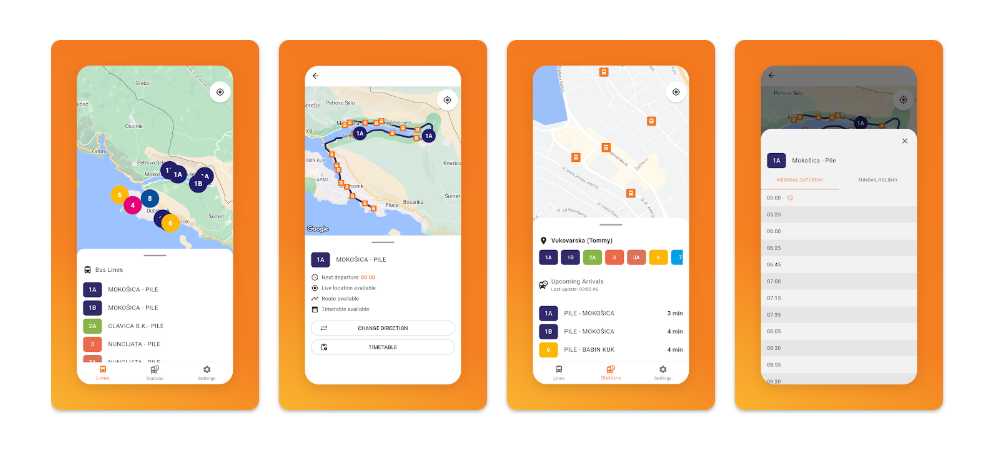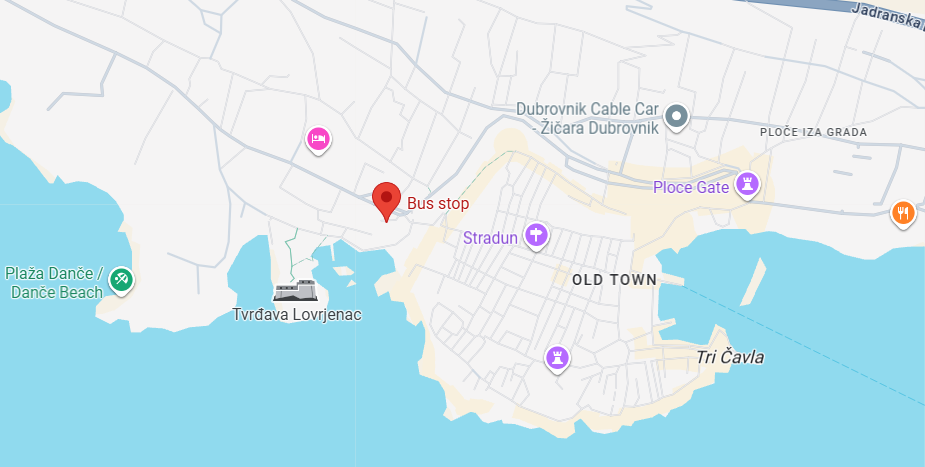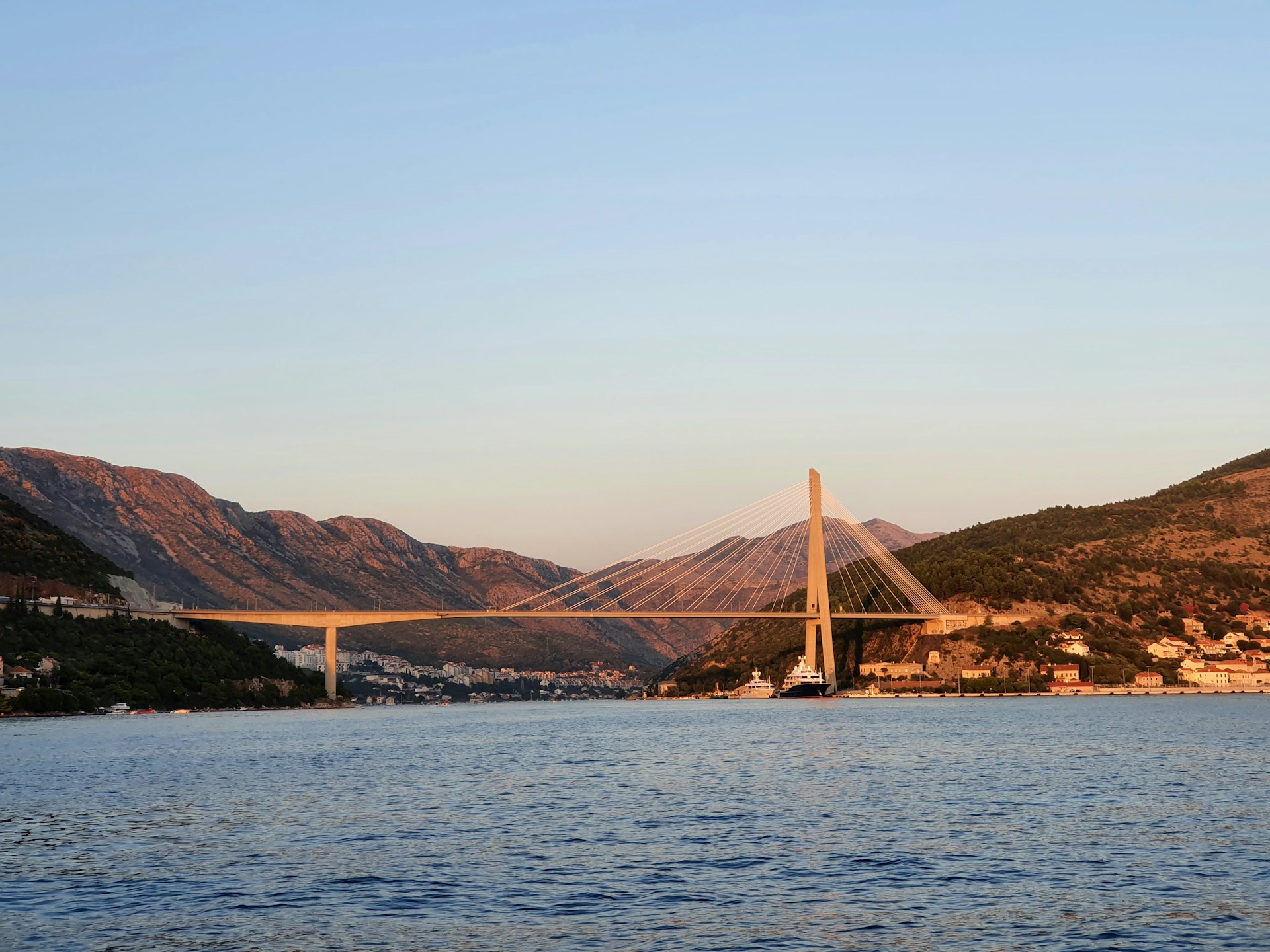Dubrovnik public transport
When you arrive in a new city, it can sometimes feel confusing to find your way around. In Dubrovnik, however, public transport is surprisingly simple. The system is based entirely on buses and once you learn a few basics about the routes, tickets and schedules, you’ll find it quite straightforward.
Unlike larger European destinations, Dubrovnik doesn’t have a metro, tram or train service. Here, the public transport network is comprised entirely of buses. They reach all the main parts of the city where visitors usually stay and they also connect Dubrovnik with surrounding towns and villages.
Libertas Dubrovnik
All local buses are operated by Libertas Dubrovnik, the city’s public transport company. Since everything runs under one operator, the system is unified. This means same ticketing, same schedules and the same recognizable orange-and-white buses.
Libertas covers both the city and suburban areas. Within Dubrovnik itself, the main destinations are Old Town (Pile Gate), Lapad, Babin Kuk, Gruž and Ploče. For day trips, suburban lines head out to places like Cavtat, Mlini and other villages along the coast.
During the day, buses generally run every 10-20 minutes depending on the route. Evening services are less frequent but still regular until midnight. They’re pretty reliable although you should allow for some extra time in the peak tourist months when traffic around the Old Town is usually heavy.
Bus routes in Dubrovnik
The bus network is centered around two main hubs: Pile Gate, right next to the Old Town walls, and Gruž bus station, located near the ferry port. From these points, buses spread out to all neighborhoods and suburbs.
The most useful routes for visitors include:
- 1A, 1B, 1C: connect Pile Gate with Mokošica
- 3: links Nuncijata and Gruž port with Pile
- 4: runs between Hotel Palace in Lapad and Pile Gate
- 5, 6, 7: connect Babin Kuk and Lapad hotels with Pile (bus 6 is the most popular, running every 15 minutes)
- 8, 9: connect Viktorija and the hospital area with Pile or Gruž
- 10: Dubrovnik ↔ Cavtat (suburban line, great for day trips)
- 17: Dubrovnik ↔ Bosanka
Altogether there are 14 city lines plus several suburban ones. Routes and schedules are displayed at bus stops, in the Libertas app and on the company’s website. Tourist information offices also provide printed bus maps.

Dubrovnik buses timetable and frequency
Most buses begin running around 5 am and continue until midnight. In the summer season, some lines extend until 2 am to cater for nightlife and late arrivals. They’re most frequent during the day, with intervals of 10-20 minutes. At night or on suburban routes, you can expect longer waits of 30 minutes or more.
If you like to plan ahead, check the Libertas mobile app or their website for real-time updates. Digital displays at bigger stops also show when the next bus is due. In July and August, especially around the Old Town and Gruž port, traffic jams are common, so always count in extra time if you need to catch a ferry or the airport shuttle.
Dubrovnik bus tickets and passes
Ticketing is simple, and there are several options available:
- Single ticket: valid for unlimited transfers on city buses for one hour from first validation.
- Two-ride ticket: useful if you know you’ll be going out and coming back.
- Daily ticket: allows unlimited rides until midnight. A good choice if you plan to move between Old Town, beaches, and your accommodation several times in a day.
- Three-day pass: offers the best value if you’re staying a bit longer and sightseeing actively.
You can buy tickets in advance at Libertas kiosks, at newspaper stands or at some local shops. This is cheaper than buying directly from the driver, who only accepts cash and charges a little more. Always validate your ticket on board and keep it until the end of your journey as checks do happen.
Children under six travel free. Suburban lines like the Cavtat bus use a different fare system and are more expensive than city routes.

The best way to use buses in Dubrovnik
Dubrovnik’s bus network covers almost everything you’ll want to see. Stops are well marked and timetables are displayed in both Croatian and English. Major stations like Pile and Gruž have LED screens showing real-time departures. If in doubt, ask a driver or fellow passenger; people are generally happy to point you in the right direction.
Accessibility is also taken into account. Many Libertas buses have ramps at the middle door and there is space on board for wheelchairs and prams.
Locals follow certain routines that are easy to pick up and will make your rides much smoother:
- Always board through the front door and validate your ticket at the small machine next to the driver
- Exit through the middle or back doors. This system keeps things moving and avoids congestion at the entrance
- Children under six ride free and strollers are welcome as long as the bus isn’t too crowded
- Carry small change if you plan to buy tickets on board
- Use the Libertas app for real-time planning since Google maps don’t provide bus routes
- If you have luggage, it’s better to board at the bus terminal where you’ll have more space
- Ask your host or hotel staff which lines are best for your location; locals always know the quickest options
If you can, try to avoid peak times. Buses between the Old Town and hotel districts in Lapad and Babin Kuk are usually pretty crowded, especially in July and August. It’s often easier to wait for the next departure than squeeze into a packed bus. Since frequencies increase in summer, you rarely have to wait long.
Making the most out of Dubrovnik public transport
For a city without trains or trams, Dubrovnik’s public transport is surprisingly efficient. The bus network, run entirely by Libertas, connects the Old Town with every major neighborhood, hotel area and even nearby towns like Cavtat. Schedules are straightforward, tickets are easy to buy and frequencies are good enough to make the system reliable even in peak season.
If you’re visiting for the first time, learn which line serves your accommodation, pick up a day pass if you plan to move around a lot and allow a little extra time in summer traffic. Instead of worrying about parking or navigating narrow streets, simply hop on a bus and enjoy more of what you came for: the beaches, the history and the stunning views that make Dubrovnik such a memorable place to visit.
Photography: Unsplash







